Abiotic stress
Introduction
Abiotic stress refers to the negative impact of non-living factors on the living organisms in a specific environment. The non-living variables can include temperature extremes, high winds, and reduced rainfall, among others. These factors can inhibit the growth and productivity of plants, leading to a decrease in crop yield Read More. Abiotic stress is one of the leading causes of crop loss worldwide, reducing average yields for most major crop plants by more than 50% Read More.[1]
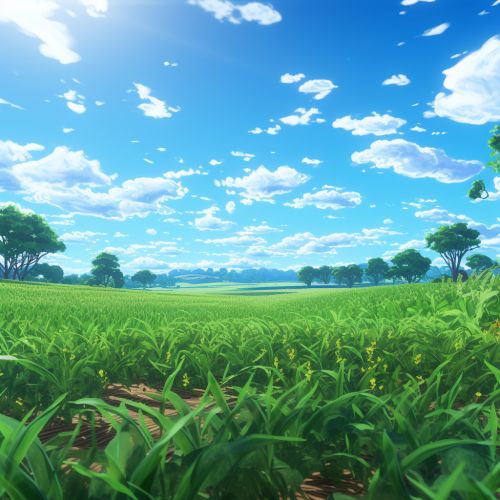
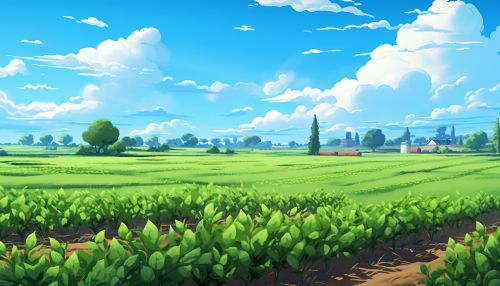
Types of Abiotic Stress
Abiotic stress is typically categorized into different types based on the nature of the environmental factor involved. These include:
Drought Stress
Drought stress occurs when the availability of water to a plant is significantly reduced. This can be due to low rainfall, high evaporation rates, or both. Drought stress can lead to a series of morphological, physiological, biochemical, and molecular changes that negatively affect plant growth and productivity.[2]
Temperature Stress
Temperature stress can be of two types: heat stress and cold stress. Heat stress occurs when temperatures are too high for a plant to effectively carry out its metabolic processes, while cold stress occurs when temperatures are too low. Both types of temperature stress can lead to significant reductions in plant growth and productivity.[3][4]
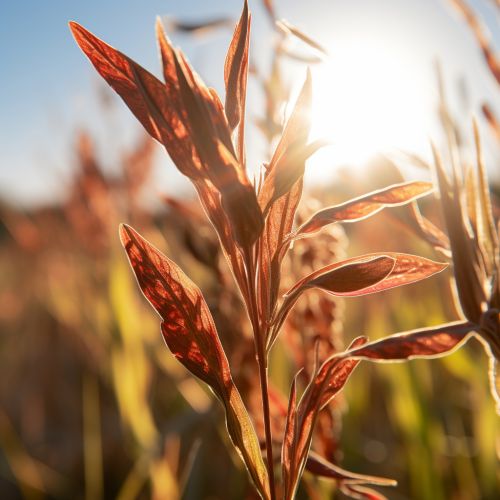

Salinity Stress
Salinity stress is caused by high concentrations of salt in the soil, which can significantly affect plant growth and productivity. High salinity can lead to ion toxicity, osmotic stress, and oxidative damage, among other effects.[5]
Oxidative Stress
Oxidative stress in plants is caused by an imbalance between the production of reactive oxygen species (ROS) and the ability of the plant to detoxify these reactive intermediates or to repair the resulting damage. This type of stress can be induced by a variety of abiotic stress factors, including drought, salinity, and temperature extremes.[6]
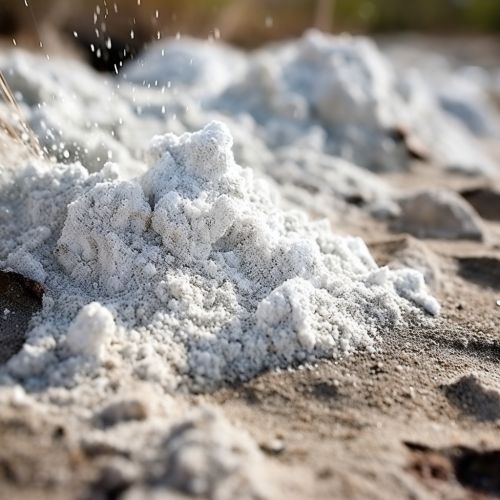

Mechanisms of Abiotic Stress Tolerance
Plants have evolved a variety of mechanisms to tolerate abiotic stress. These mechanisms can be broadly categorized into avoidance mechanisms, tolerance mechanisms, and resistance mechanisms.
Avoidance Mechanisms
Avoidance mechanisms are strategies that plants use to avoid the harmful effects of abiotic stress. For example, some plants can alter their growth patterns to avoid drought stress, such as developing deeper root systems to access deeper soil water reserves.[7]
Tolerance Mechanisms
Tolerance mechanisms are strategies that allow plants to survive and continue growth under abiotic stress conditions. These can include physiological changes such as the accumulation of osmoprotectants, molecules that help maintain cell turgor pressure under drought or salinity stress.[8]
Resistance Mechanisms
Resistance mechanisms are strategies that enable plants to resist the harmful effects of abiotic stress. These can include the production of antioxidants to combat oxidative stress, or the synthesis of heat-shock proteins to protect against heat stress.[9][10]

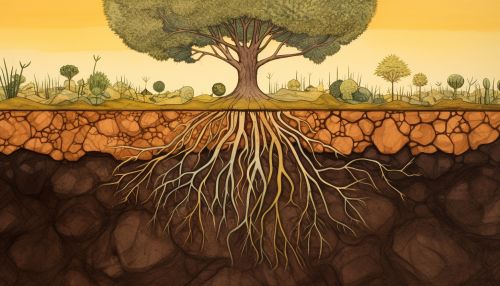
Impact of Abiotic Stress on Agriculture
Abiotic stress is a major challenge in agriculture, as it can significantly reduce crop yield and quality. The impact of abiotic stress on agriculture is particularly severe in regions with harsh environmental conditions, such as arid and semi-arid regions. However, even in regions with relatively favorable environmental conditions, abiotic stress can still pose a significant threat to agricultural productivity.[11]
Strategies to Mitigate Abiotic Stress
Several strategies can be employed to mitigate the impact of abiotic stress on agriculture. These include traditional breeding techniques, genetic engineering, and agronomic practices.
Traditional Breeding
Traditional breeding techniques involve the selection and breeding of plants with desirable traits, such as drought tolerance or salinity tolerance. This approach has been used for centuries to improve crop varieties and is still widely used today.[12]
Genetic Engineering
Genetic engineering involves the modification of a plant's genetic material to improve its tolerance to abiotic stress. This can be achieved through the introduction of genes that confer stress tolerance, or through the modification of existing genes to enhance their function.[13]
Agronomic Practices
Agronomic practices involve the management of agricultural systems to minimize the impact of abiotic stress. This can include practices such as irrigation management, soil management, and crop rotation.[14]
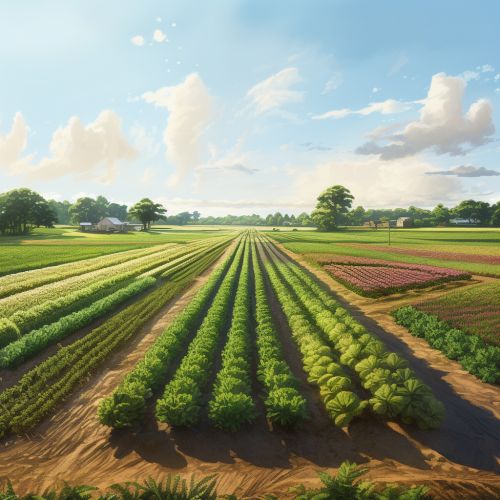
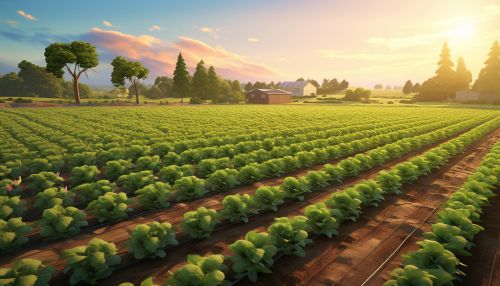
See Also
References
- ↑ Boyer, J. S. (1982). Plant productivity and environment. Science, 218(4571), 443-448.
- ↑ Farooq, M., Wahid, A., Kobayashi, N., Fujita, D., & Basra, S. M. (2009). Plant drought stress: effects, mechanisms and management. Agronomy for sustainable development, 29(1), 185-212.
- ↑ Wahid, A., Gelani, S., Ashraf, M., & Foolad, M. R. (2007). Heat tolerance in plants: An overview. Environmental and Experimental Botany, 61(3), 199-223.
- ↑ Thomashow, M. F. (1999). Plant cold acclimation: freezing tolerance genes and regulatory mechanisms. Annual review of plant biology, 50(1), 571-599.
- ↑ Munns, R., & Tester, M. (2008). Mechanisms of salinity tolerance. Annual review of plant biology, 59, 651-681.
- ↑ Mittler, R. (2002). Oxidative stress, antioxidants and stress tolerance. Trends in plant science, 7(9), 405-410.
- ↑ Lynch, J. P. (2013). Steep, cheap and deep: an ideotype to optimize water and N acquisition by maize root systems. Annals of botany, 112(2), 347-357.
- ↑ Bartels, D., & Sunkar, R. (2005). Drought and salt tolerance in plants. Critical reviews in plant sciences, 24(1), 23-58.
- ↑ Mittler, R., Vanderauwera, S., Gollery, M., & Van Breusegem, F. (2004). Reactive oxygen gene network of plants. Trends in plant science, 9(10), 490-498.
- ↑ Wang, W., Vinocur, B., & Altman, A. (2003). Plant responses to drought, salinity and extreme temperatures: towards genetic engineering for stress tolerance. Planta, 218(1), 1-14.
- ↑ Boyer, J. S. (1982). Plant productivity and environment. Science, 218(4571), 443-448.
- ↑ Collins, N. C., Tardieu, F., & Tuberosa, R. (2008). Quantitative trait loci and crop performance under abiotic stress: where do we stand?. Plant physiology, 147(2), 469-486.
- ↑ Wang, W., Vinocur, B., & Altman, A. (2003). Plant responses to drought, salinity and extreme temperatures: towards genetic engineering for stress tolerance. Planta, 218(1), 1-14.
- ↑ Farooq, M., Wahid, A., Kobayashi, N., Fujita, D., & Basra, S. M. (2009). Plant drought stress: effects, mechanisms and management. Agronomy for sustainable development, 29(1), 185-212.
